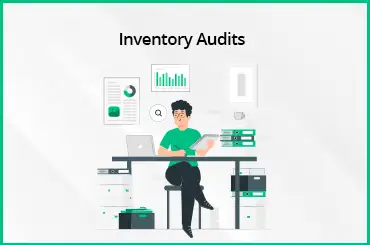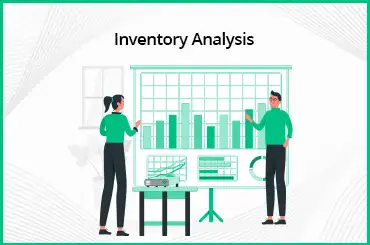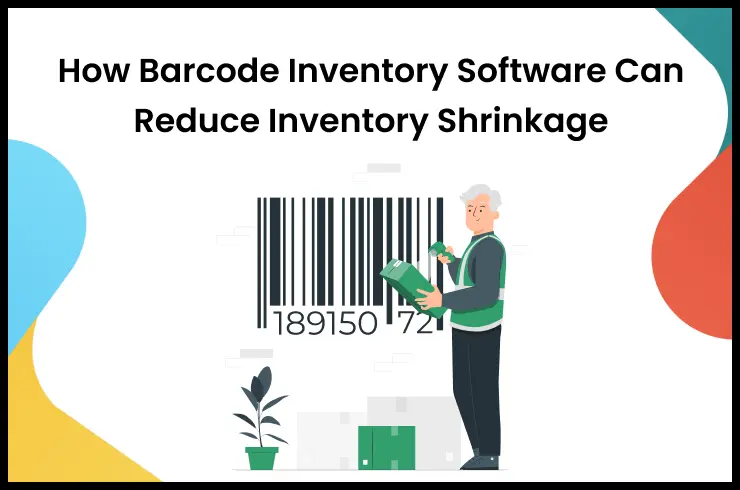Understanding different types of inventory is essential for effectively managing a company's resources, minimizing waste, reducing carrying costs, and increasing customer satisfaction. An effective inventory management system that handles diverse types of inventory can help a company better track inventory levels, forecast future demand, and make informed decisions on purchasing and production.
By taking the time to understand different types of inventory and implementing an effective inventory management system, your business can improve its operations, increase profitability, and achieve long-term success. Let's dive into this topic further:
What Is Inventory?
Inventory is a term used to describe the items that a company holds for sale, manufacturing, or any other purpose. In addition to stocking up the inventory, it is important to focus on inventory management, which eventually helps streamline the supply chain.
Inventory refers to the stock of raw materials, semi-finished goods, or finished products that a company retains to meet customer demands. Management of inventory is a crucial part of any business as it helps companies keep track of the items they have in stock, avoid stock shortages, and manage their flow of goods.
Types of Inventory
There are several types of inventory in manufacturing, each serving a unique purpose within a business. The common types of inventory are as follows:
Raw Materials Inventory
- Raw materials inventory is the collection of raw materials and components that a company holds for production.
- This type of inventory is used in the early stages of production and is the starting point for creating finished goods.
- Raw materials inventory includes everything from raw materials like wood or metal to parts and components like screws or circuits.
Work-in-Progress Inventory
- Work-in-progress (WIP) inventory refers to the unfinished products that are in the process of being manufactured.
- Also known as ‘in-process inventory,’ it provides an accurate picture of the ongoing production process.
- It is important to manage WIP inventory effectively to avoid production bottlenecks and ensure a smooth production process flow.
Read Also: GSTIN
MRO Inventory
- MRO or maintenance, repair, and operations inventory, refers to the collection of items used to maintain and repair a company's production equipment and facilities.
- This inventory can include everything from replacement parts and tools to cleaning supplies and safety equipment.
Safety Stock Inventory
- This refers to a company's extra inventory to ensure it can meet customer demand during periods of high demand or unexpected events.
- Important for companies operating in industries with fluctuating demand or relying on just-in-time (JIT) inventory management systems.
Obsolete Inventory
- Obsolete inventory refers to items that are no longer in demand or have been discontinued.
- This type of inventory can become a problem for businesses if it is not managed effectively, as it ties up valuable storage space and financial resources.
- Options to manage obsolete inventory effectively include selling it as scrap, returning it to suppliers, or donating it to charity.
Cycle Count Inventory
- This is a type of inventory or control method where businesses periodically count a portion of their inventory to ensure that their records are accurate.
- This type of inventory helps businesses identify and resolve discrepancies in their inventory records.
- It can help prevent stock shortages and overstocking.
Pipeline Stock
- Pipeline Stock consists of goods that have not yet been sold but are not under the jurisdiction of the company.
- Also termed as ‘in transit’ since this inventory is in the transportation network.
Anticipation Inventory
- This type of inventory is kept on hand to meet upcoming demand.
- Sometimes, the company may hold volumes of inventory because they anticipate an event that might take place.For example, stocking up on a certain item due to a price hike or transportation strike.
Read Also: Credit Note
Finished Goods Types of Inventory
Finished goods inventory refers to the products that have been completely manufactured and are ready for sale. This type of inventory is the result of the production process and is often the most valuable type of inventory for a company, as it has gone through all the cycles of production to reach its final stage.
Effective management of finished goods inventory is crucial for ensuring that the right products are available for sale at the right time. It also helps to minimize the risk of obsolescence and ensures that the company can meet customer demand on a timely basis. categories:
- "inventory"















